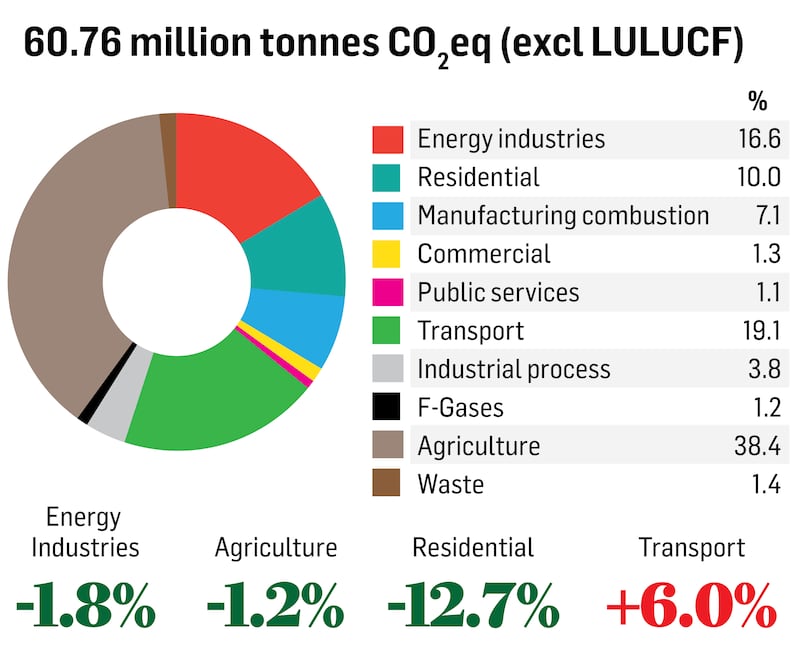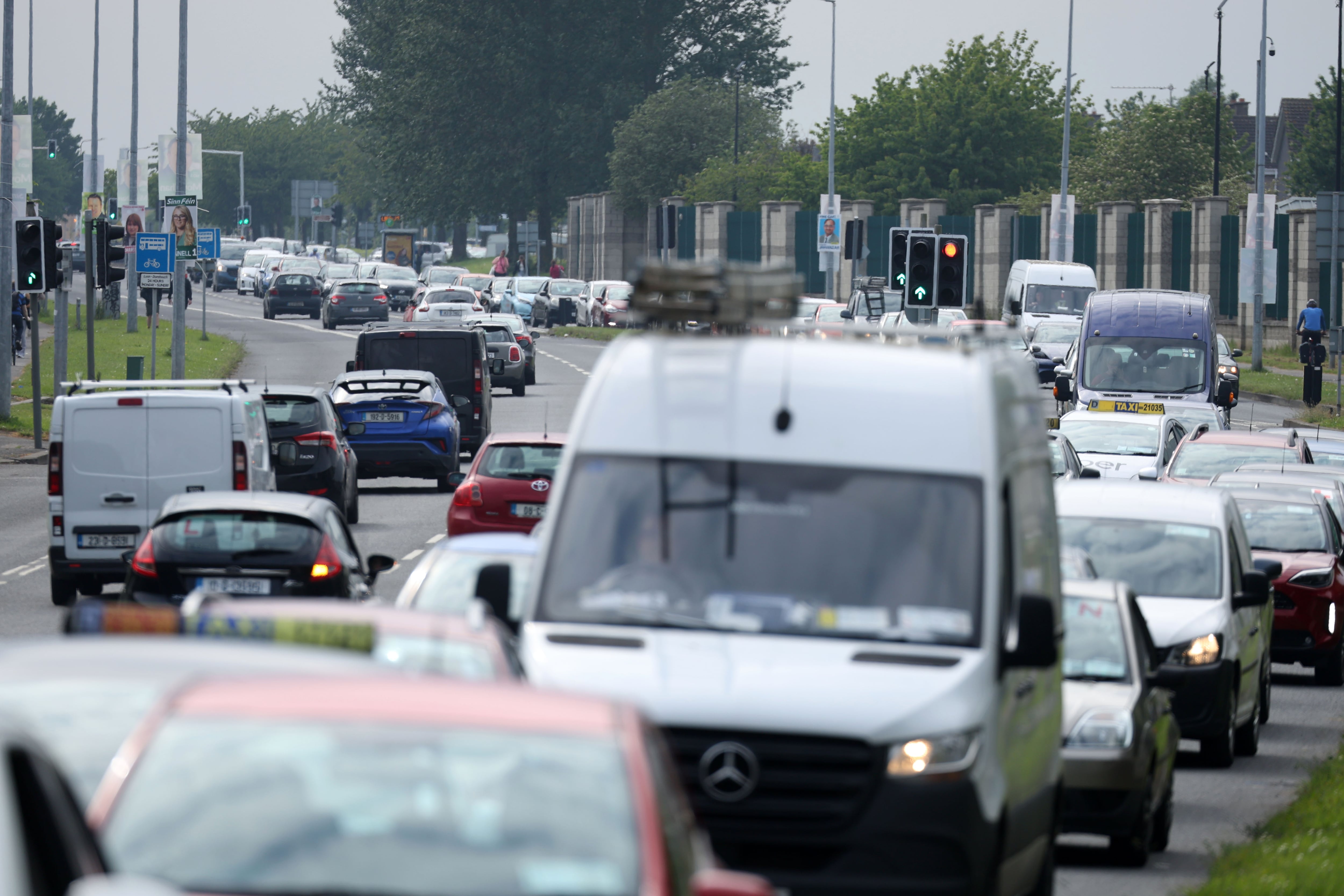Ireland succeeded in reducing its overall carbon emissions last year by a small margin, suggesting they may have peaked, though progress has been undermined by rising transport emissions, the Environmental Protection Agency (EPA) has warned.
In its latest greenhouse gases inventory issued on Friday, it confirms all other sectors reduced their emissions last year, including agriculture – by 1.2 per cent – reversing a rising trend over many years. This was driven by reduced fertiliser use but was countered by an increase in dairy cow numbers – agriculture remains the single biggest source of national emissions at 38.4 per cent.

While the EPA welcomed the 1.9 per cent downturn in emissions, it confirmed almost half of the Government’s carbon budget for 2021-2025, designed to limit emissions in all sectors, has been used in the first two years. It blamed a lack of pace in delivering agreed actions.
As a consequence “an extremely challenging annual reduction of 12.4 per cent is required for each of the remaining years” if Ireland is to stay within a legally-binding budget, it said.
READ MORE
This could also have implications for governments up to 2030 in forcing the introduction of more radical decarbonisation measures.
EPA director general Laura Burke said: “We need faster progress on the actions set out in national climate action plans to decarbonise and transform all sectors of Ireland’s economy, to stay within national carbon budgets and reduce our greenhouse gas emissions by 51 per cent by 2030.”
An overall emissions reduction was, however, welcome, she said, and it was encouraging to see the impact of action across key economic sectors. “Drivers for this reduction were higher fossil fuel prices and associated behavioural change, more renewable energy, and the impact of regulation such as the nationwide ban on smoky fuels in home heating,” she added.
Higher transport activity post-Covid – of both private cars and freight transport – is eroding the impact of electric vehicles, the EPA concluded.

Hot water: why Ireland's marine heatwave signals danger
In 2022 there were 72,000 battery electric (BEVs) and plug-in hybrid electric (PHEVs), which is only 37 per cent of the Government’s target for 2025.
EPA programme manager Mary Frances Rochford said: “A significant increase in transport emissions in 2022 highlights the fact that a growing economy, with high employment, will continue to produce emissions if we do not break the link and decouple emissions from increased activity by using cleaner and alternatives sources of energy.”
She said current decarbonisation actions were being outpaced by increased energy demand across the economy and dependence on fossil fuels for energy generation.
The provisional figures also show Ireland exceeded its 2022 annual limit under the EU’s “effort sharing regulation”. These binding annual limits on member states in domestic transport (excluding aviation), buildings, agriculture, small industry and waste are set to become more demanding from this year, up to the end of the decade.
Ireland has adopted one of the most ambitious climate targets in the world, spelt out in the Government’s 2023 climate plan, but its emissions have remained stubbornly high at a time when those of many other EU members states are on a sustained downward trajectory.
There was a temporary emissions reduction due to Covid. Total emissions (excluding land use, land use change and forestry – known as LULUCF) in 2020, the year most impacted by restrictions due to the pandemic, decreased by 3.5 per cent when compared to 2019. Ireland’s greenhouse gas emissions increased by 5.1 per cent in 2021 compared to 2020; back to 1.4 per cent above 2019 pre-Covid levels.
Covid restrictions most impacted the transport and residential sectors. Transport emissions in 2020 were down 15.5 per cent compared to 2019 and emissions from the residential sector increased by 8.9 per cent (impacted by more people working from home). Other significant sectoral changes were due to a reduction in peat and coal used in electricity generation with energy industries emissions down by 7.4 per cent.













